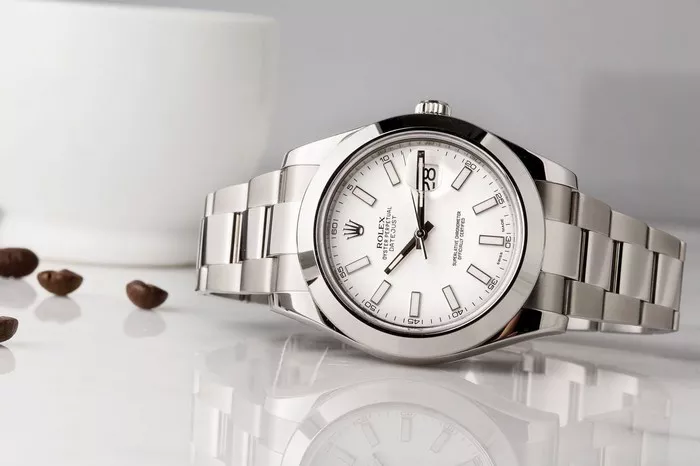The Rolex Daytona is one of the most coveted watches in the world, renowned for its precision, style, and legacy. However, finding one can be an elusive quest for many enthusiasts. This article delves into the reasons why the Rolex Daytona is so hard to find, exploring various aspects of supply and demand, market dynamics, and Rolex’s own strategies.
Rolex Daytona Overview
The Rolex Daytona, officially known as the Rolex Cosmograph Daytona, was introduced in 1963. It was designed primarily for motorsport enthusiasts, featuring a chronograph function that allows for precise timing. The watch has evolved over the decades, with various models and updates enhancing its appeal and functionality.
High Demand and Limited Supply
Popularity and Status
Historical Significance: The Daytona has a rich history, including its association with motorsport legend Paul Newman. This historical connection has cemented its status as an iconic timepiece.
Celebrity Endorsement: Numerous celebrities and high-profile individuals have been seen wearing the Daytona, further increasing its desirability and demand.
Design Appeal: Its classic design, combined with modern updates, makes it a timeless piece that appeals to both collectors and new enthusiasts.
Limited Production
Controlled Supply: Rolex maintains a controlled production schedule, ensuring that the number of Daytona watches produced each year is limited. This strategy helps maintain exclusivity and desirability.
Craftsmanship: Each Daytona is crafted with meticulous attention to detail, which can limit the number of watches Rolex can produce without compromising quality.
Market Dynamics
Secondary Market
Resale Value: The Daytona’s high resale value on the secondary market fuels its scarcity. Collectors and speculators purchase them not just for personal use but as investment assets, often keeping them out of the primary market.
Auction Results: Daytona models frequently fetch high prices at auctions, further driving up demand and contributing to their scarcity in the retail market.
Waiting Lists
Long Wait Times: Authorized Rolex dealers often have extensive waiting lists for Daytona models. These lists can stretch for years, making it difficult for potential buyers to acquire the watch through traditional retail channels.
Dealer Allocation: Rolex dealers receive a limited number of Daytona watches, and allocation is based on various factors, including their sales history and customer relationships. This can result in some dealers having longer waiting lists than others.
See Also: Will Rolex prices drop in 2024
Rolex’s Strategy
Brand Control
Market Positioning: Rolex positions the Daytona as a luxury item, and controlling its availability helps maintain its prestigious status. By keeping supply limited, Rolex ensures that the watch remains a symbol of exclusivity.
Scarcity as a Strategy: Rolex’s strategy of limited production and distribution helps maintain high demand and a strong market presence. This scarcity contributes to the Daytona’s allure and ongoing desirability.
Production Challenges
Complexity of Manufacture: The Daytona’s chronograph function requires complex engineering and craftsmanship. Producing each watch to meet Rolex’s high standards can be time-consuming, limiting the number of units that can be manufactured.
Quality Control: Rolex’s stringent quality control measures ensure that each Daytona meets their high standards. This dedication to quality can slow down production, further contributing to its scarcity.
Collectors’ Impact
Enthusiast Demand
Collector Community: The Rolex Daytona has a dedicated community of collectors who actively seek out the watch. This high level of interest can drive up demand and contribute to its scarcity.
Investment Potential: Many collectors view the Daytona not only as a desirable watch but also as a potential investment. This investment potential can lead to fewer watches being available for everyday buyers.
Market Speculation
Price Speculation: Speculators often buy Daytona watches with the intention of reselling them at a higher price. This practice can reduce the number of watches available to genuine buyers.
Market Trends: Fluctuations in the watch market can impact the availability of the Daytona. Trends in luxury watches and economic conditions can influence both demand and supply.
Global Distribution
Regional Variations
Availability by Region: The availability of the Daytona can vary significantly depending on the region. Some areas may experience greater scarcity due to higher demand or fewer authorized dealers.
International Demand: Global demand for the Daytona can impact its availability in specific markets. High demand in certain regions may lead to shortages in others.
Distribution Channels
Authorized Dealers: Rolex distributes Daytona watches through a network of authorized dealers. The number of these dealers is limited, which can restrict access to the watch.
Pre-Owned Market: Many Daytona watches are sold through the pre-owned market, often at a premium. This can further limit the availability of new watches.
Conclusion
The Rolex Daytona’s scarcity is a multifaceted issue involving high demand, limited supply, strategic brand management, and market dynamics. Rolex’s controlled production, coupled with the watch’s historical significance and appeal, contributes to its elusive nature. Understanding these factors can help enthusiasts navigate the complexities of acquiring this iconic timepiece.
The Rolex Daytona remains one of the most sought-after watches in the world, and its scarcity only adds to its allure. Whether you are a seasoned collector or a new enthusiast, appreciating the factors behind its limited availability can deepen your understanding of this legendary timepiece.

